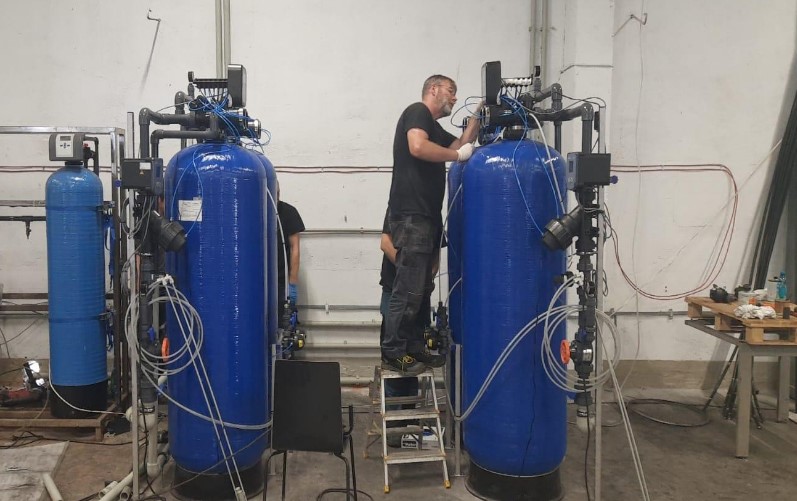WATER TREATMENT AND ALKALIZATION SYSTEMS
This presentation demonstrates our knowledge of metabolic changes caused by hydrating the BODY with so-called “living water.” In our offer, we emphasize that due to entropy (structural) changes in water after treatment in the magnetizer, the water gains energetic activity. After the resonance process, water becomes “living.” This is a generally accepted international term.
The magnetizer is installed indoors, connected to the existing installation at the building’s inlet. For it to operate effectively, it is pre-set based on prior water analysis and the type of intake. If necessary (according to the delivery agreement), adjustments are made at the client’s location. The resonator will be prepared for flow rates of 2 m³/h. The altered structure of the water is maintained in the vessel for 24 hours.
As part of the water alkalization process, we apply a water alkalization module, which raises the water’s pH to a constant level of 8.5 pH.
OPERATION OF RESONATORS AND THEIR CONSTRUCTION
All our devices are characterized by consistent durability and quality of workmanship, resulting in very long operating cycles. After 10 years, the device may require minor calibration, but this also depends on proper usage. Our devices have been operating for over 20 years and still remain failure-free.
All our devices come with a 10-year warranty.
Cost of the devices including installation – 26,000 PLN / net.
Service completion time – up to 1.5 months.

MECHANISM OF MHD RESONATORS’ INFLUENCE ON WATER SYSTEMS:
- There are over 40 theories attempting to explain the mechanism of the magnetic field’s influence on various properties of water systems. To this day, this influence is not fully explained.
- In MHD resonators, we use permanent magnets. The technical solution we apply makes it possible to direct the field of permanent magnets in the working gap of the device, maintaining its effective operation. This also takes into account the dynamics of external dissipative factors and the instability of technological processes. In both cases, a field gradient is at work. MHD resonators are equipped with a package of permanent magnets with high magnetic coercivity, produced from rare-earth metals (Nd-Fe-B), creating the working magnetic field. Water molecules passing through the device’s magnetic field are affected by the Lorentz force (F = q (V × B), where q – electric charge of the ion, V – stream velocity, B – magnetic induction). The special field configuration, created through a specific arrangement of magnets, induces oscillatory (pendulum-like) movements of water molecules and structural rearrangements. This causes changes in its thermophysical, physical, and chemical properties, as well as the reactivity of molecules, influencing ion composition and initial hardness.
- Manufactured with diameters ranging from 50 mm to 2600 mm and beyond.
- Mounted using flanges with seals and a filtration mesh, included in the delivery.
- For aggressive environments and the food industry, when integrated into technologies, resonators are made of special corrosion-resistant materials (stainless steel, titanium).



